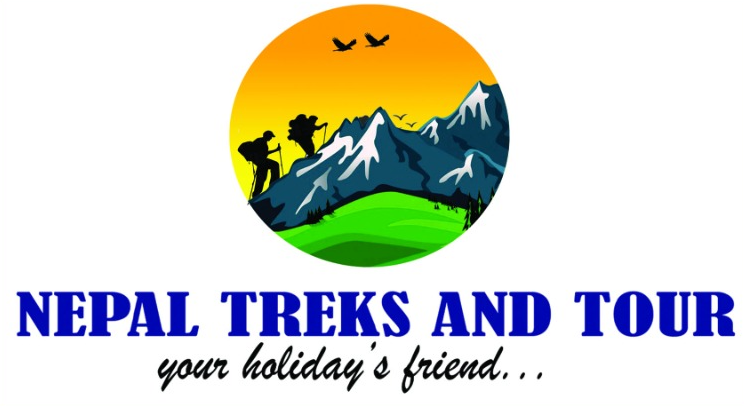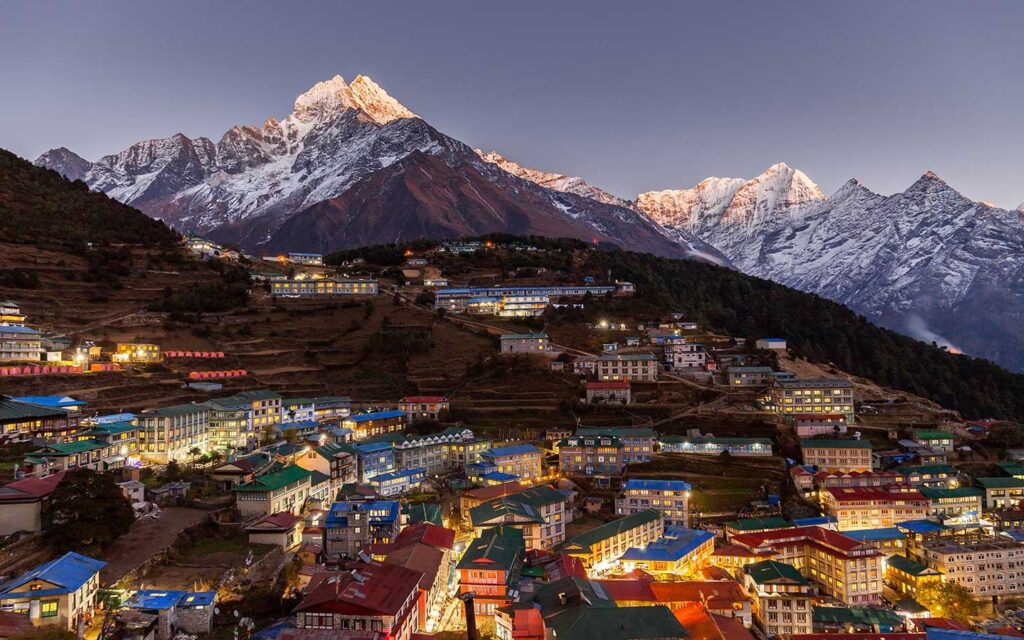Are you dreaming of standing at the foot of the world’s highest peak? The Everest Base Camp (EBC) trek in Nepal is a journey of a lifetime. But before you book your flight, one of the most important questions you need to ask is: “When is the perfect time to do the EBC Trek?”
Choosing the right season is crucial for a successful and enjoyable trek. The weather in the Himalayas changes a lot, and picking the best time can make the difference between a beautiful, clear view and a cloudy, difficult climb.
This guide will give you all the information you need, from the best seasons to what to expect each month, so you can plan your adventure with confidence.
What is the Absolute Best Time to Trek to EBC Trek?
The two main trekking seasons in Nepal are Autumn and Spring. These are widely considered the best times to do the EBC trek.
Why are these seasons so popular for EBC Trek?
Stable Weather: The skies are generally clear and the weather is predictable.
Best Mountain Views: With clear skies, you get amazing, uninterrupted views of Mount Everest, Ama Dablam, Lhotse, and other Himalayan giants.
Comfortable Temperatures: The days are mild and pleasant for trekking, though nights can be cold, especially at higher altitudes.
Blooming Nature: In spring, you will see the famous rhododendron forests in full bloom. In autumn, the post-monsoon air is fresh, and the landscapes are lush and green.
Detailed Breakdown of the Best Seasons for EBC Trek
1. Autumn Season (September to November)
This is the most popular time for trekking in the Everest region. It starts after the monsoon rains have cleared the dust from the air, making the skies incredibly clear.
September:
Early September: The last of the monsoon might still be around, with some rain at lower elevations. However, by mid-to-late September, the weather becomes very stable.
What to Expect: Fresh, clean air and a green, vibrant landscape. The crowds are a little smaller than in October.
October:
Peak of the Season: October offers the most stable weather and the best mountain views. This is the busiest month on the trail.
What to Expect: Bright, sunny days and perfect visibility. You will share the trail with many other trekkers from all over the world. It’s a great time for social trekkers and photographers.
November:
The Start of Cooler Weather: The weather remains excellent, with clear skies and spectacular views. The temperatures start to drop, especially at night.
What to Expect: Fewer crowds than October, a peaceful trail, and a crisp, cold air. It is perfect for those who want a quieter, more solitary experience while still enjoying great weather.
2. Spring Season (March to May)
Spring is the second-best season for the EBC trek. It brings warmer temperatures and new life to the mountains.
March:
Beginning of Spring: The weather is still a bit cold from the winter, but it gets warmer as the month goes on.
What to Expect: Less crowded trails than in the peak of autumn. The rhododendron flowers begin to bloom at lower altitudes, adding beautiful color to the trek.
April:
Peak Spring: This is another excellent month for trekking. The weather is warm and stable.
What to Expect: Trails are busy with trekkers. The rhododendron forests are in full bloom, making for a truly beautiful trek. You might also see Everest climbing expeditions preparing at Base Camp.
May:
The Pre-Monsoon Period: The weather is warm, but it gets a little cloudy in the afternoons. The pre-monsoon moisture can bring some rain and mist, especially later in the month.
What to Expect: Excellent views in the mornings. You can still see climbers and the excitement of the expedition season at EBC.
What About the “Off-Seasons”?
Trekking to EBC is possible year-round, but it comes with more challenges.
1. Winter (December to February)
The Cold: This is the coldest time. Temperatures can drop well below freezing, especially at night.
Challenges: Heavy snow can sometimes block high-altitude trails. You need to be prepared with very warm gear and be flexible in your travel plans in case of flight delays to Lukla.
Why Go? The trails are very quiet, and the mountain views are crystal clear. The snow-covered landscape is breathtakingly beautiful. This is for experienced trekkers who are well-prepared for the cold.
2. Monsoon (June to August)
The Rain: This is the rainy season. The trails at lower elevations can be muddy and slippery.
Challenges: Rain can lead to frequent flight delays to and from Lukla. Clouds often cover the mountains, blocking views.
Why Go? The air is fresh, and the valleys are incredibly lush and green. You will have the trails mostly to yourself. It’s a great option for those who love solitude and don’t mind a little rain.
Ready to plan your unforgettable journey to the base of Mount Everest? We are a local Nepalese company with a team of experienced guides who know every part of the trail. We focus on providing a safe, authentic, and high-quality trekking experience.
To find the perfect EBC trek package for your preferred season, visit our website: Nepal Treks and Tour
Book your adventure today and make your dream of seeing Everest a reality!
FAQs on EBC Trek
Q: What is the single best month for the EBC trek?
A: October is the most recommended month due to its stable, clear weather and perfect mountain views.
Q: Is it safe to trek EBC during the monsoon?
A: Yes, it is safe with a good guide and proper gear. The main challenges are muddy trails and potential flight delays to Lukla.
Q: Do I need to book in advance?
A: For the peak seasons (Autumn and Spring), it is highly recommended to book your trek and flights in advance, as lodges and flights fill up quickly.
Q: How difficult is the Everest Base Camp trek?
The EBC trek is considered a moderate to difficult trek. It is a long walk, not a technical climb, but the high altitude and long daily walks make it physically challenging. Anyone with a good level of fitness, a positive attitude, and a slow, steady pace can do it.
Q: How much does the EBC trek cost?
The cost can vary a lot, but a typical guided trek package from Kathmandu usually ranges from $1,500 to $3,000 USD per person. This often includes permits, guides, porters, food, and accommodation. The price depends on the company, services included, and duration.
Q: How long does the EBC trek take?
The standard EBC trek itinerary is 12-14 days. This includes two to three days for proper acclimatization to the altitude. A longer itinerary is safer and more enjoyable.
Q: How high is Everest Base Camp?
Everest Base Camp (South) is located at an altitude of 5,364 meters (17,598 feet) above sea level. The highest point you will reach on the trek is Kala Patthar, at 5,545 meters (18,192 feet), which offers the best view of Mount Everest.
Q: Can I get altitude sickness?
Yes. Altitude sickness can affect anyone, regardless of fitness level. It is a serious risk. The key is to ascend slowly, drink a lot of water, and listen to your body. Our itineraries at Nepal Treks and Tour are designed with a focus on safe acclimatization.
Q: Do I need a guide and porter?
It is highly recommended to hire a local guide. They ensure your safety, help with navigation, and assist with any problems that may arise. Porters are also a great help, as they carry your main luggage, allowing you to walk with just a light daypack.
Q: What kind of food is available on the trek?
The food is surprisingly good and varied. You’ll find a mix of local Nepalese dishes like Dal Bhat (rice and lentils, highly recommended for energy!) and some Western food like pasta, pizza, and pancakes.
Q: What is the accommodation like?
You will stay in local “teahouses” and lodges. The rooms are basic, with twin beds, and are clean but not luxurious. Bathrooms are often shared, and hot showers might cost extra. The common dining area is usually warm with a central stove.
Q: Can I charge my phone and camera batteries?
Yes, you can charge your devices at most teahouses for a small fee. However, as you go higher, the cost and availability can change. It’s a good idea to bring a power bank.
Q: Do I need to be a super athlete to do this trek?
No. You need to be in good physical condition and able to walk for 5-7 hours a day on hilly terrain. Regular exercise like jogging, cycling, or hiking with a backpack in the months before your trek will prepare you well.
Q: Can I see Mount Everest from Base Camp?
This is a very common question! You can see the surrounding peaks from Base Camp, but the view of Mount Everest itself is blocked by the massive Nuptse wall. The best, most iconic view of Everest is from the top of Kala Patthar.
Q: Are there flight delays to Lukla?
Yes, flights to and from Lukla are a major concern. They are often delayed or cancelled due to bad weather. It’s important to build in buffer days in your travel plan for this reason.







